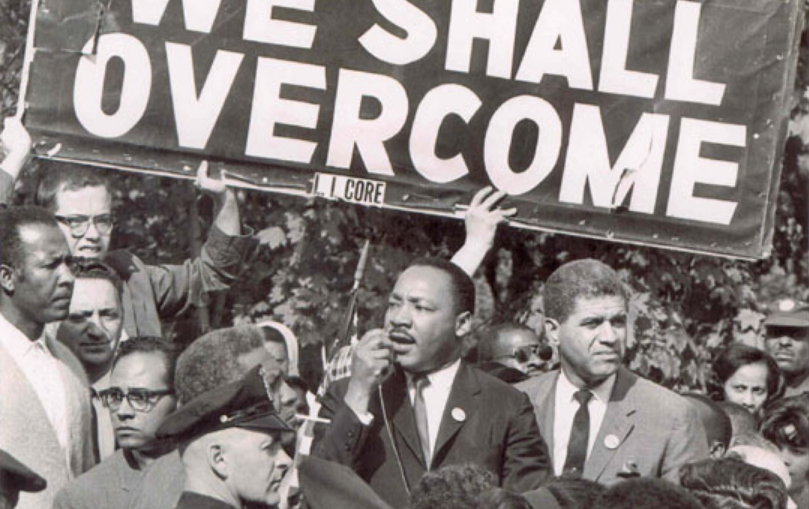Table of Contents
SEGREGATION AND JIM CROW
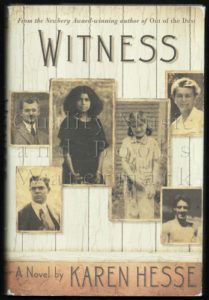 |
In Karen Hesse’s Witness (Scholastic, 2003), the Ku Klux Klan moves into a small Vermont town in the 1920s, bringing danger to 12-year-old Leanora, who is black, and six-year-old Esther, who is Jewish. A novel in verse, told in many voices. For ages 9-12. |
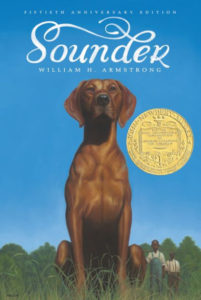 |
In William Armstrong’s Sounder (HarperCollins, 2019), a Newbery Medal winner, the father of a poverty-stricken black sharecropper family is sent to prison for stealing food. In his absence, the family struggles to survive, while his son does his best to get an education. The story revolves around the father’s hunting hound, Sounder – and (spoiler) expect to cry. Also see the movie version (1972), rated G. |
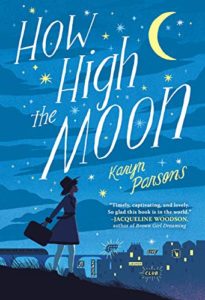 |
Set in 1943, Karyn Parsons’s How High the Moon (Little, Brown, 2020) is the story of Ella, growing up in the Jim Crow South. A much-longed-for visit to her mother in Boston ends in disappointment – Ella is simply trapped in an apartment while her mother works all day as a shipfitter and spends nights singing in jazz clubs – and back home tragedy strikes as Ella’s friend George is accused of the murder of two white girls. Narration alternates between Ella and her cousins Henry and Myrna. For ages 9-12. |
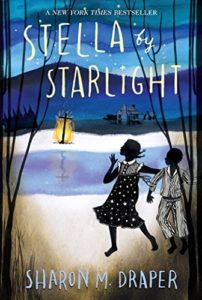 |
In Sharon M. Draper’s Stella by Starlight (Atheneum/Caitlyn Dlouhy Books, 2016), set in Depression-era North Carolina, the Ku Klux Klan is fomenting violence and has burned down the house of a black family whose father just registered to vote. Stella and family and friends, however, stand up for change. For ages 9-13.
|
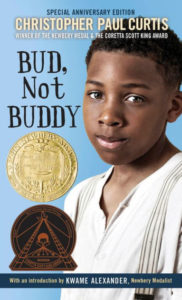 |
In Christopher Paul Curtis’s Bud, Not Buddy (Yearling, 2002), a Newbery Medal winner, set during the Depression, ten-year-old Bud, after a stint in another horrible foster home, is on the run, searching for his father – who just might be the leader of a band, the Dusky Devastators of the Depression. Issues of abuse, racism, poverty, and family – and a tie-in to the importance of music in African-American history. For ages 10 and up. |
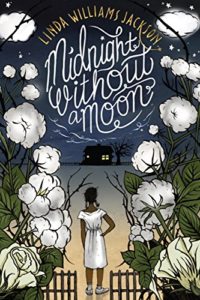 |
Linda Williams Jackson’s Midnight Without a Moon (Houghton Mifflin Harcourt, 2017) is set in Mississippi in the summer of 1955, where Rose Lee Carter lives with her sharecropper grandparents – and hopes to move north to live with her mother in Chicago. Jim Crow laws are in effect at home, and registering to vote is enough to get black citizens killed. Then young Emmett Till is murdered for supposedly whistling at a white woman – and Rose realizes that she’d rather stay where she is and fight for change. For ages 10-13. |
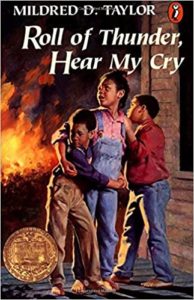 |
Mildred D. Taylor’s Roll of Thunder, Hear My Cry (Puffin, 2004), set in Mississippi during the Depression, is the story of young Cassie Logan and family, and their struggle to hold their own in the face of racism and social injustice in the Jim Crow era. For ages 11 and up. Also see the movie version (1978). |
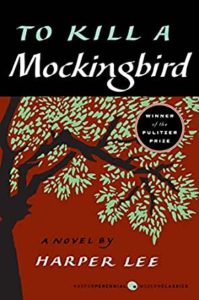 |
Harper Lee’s To Kill a Mockingbird (Harper Perennial, 2002), one of the best novels of the 20th century, is a coming-of-age story set in Alabama during segregation. The story is told through the eyes of seven-year-old Scout, whose father – Atticus Finch – is defending a black man accused of raping a white woman. A wonderful read for teens and adults. It’s rare that a movie is just as good as the book, but To Kill a Mockingbird (1962), with Gregory Peck as Atticus Finch, is an exception to the rule. Generally recommended for ages 12 and up. |
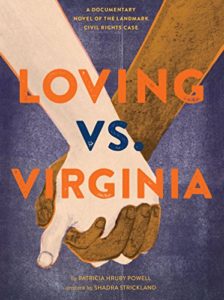 |
Patricia Hruby Powell’s Loving vs Virginia (Chronicle Books, 2017) is a documentary novel in verse about the landmark court case over the marriage of Richard Loving and Mildred Jeter. Richard was white; Mildred black; and the law in Virginia forbade interracial marriage. Their story is told in part with news clippings, maps, and period photos. A discussion-promoting read for ages 12 and up. |
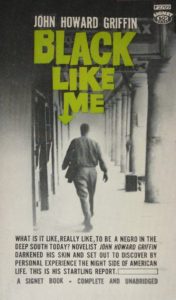 |
John Howard Griffin’s classic Black Like Me (Berkley, 2010) is the story of the author’s experiences in the Deep South in the 1950s, when he darkened his skin and entered the viciously segregated world of America’s black people. A searing indictment of racism. For teens and adults.
|
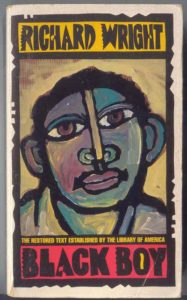 |
A landmark autobiographical memoir, Richard Wright’s Black Boy (Harper Perennial, 2020) is an intense and unforgettable story of Wright’s growing up in virulently racist Mississippi. For teens and adults.
|
WHEN SOME COULDN’T GET A LIBRARY CARD
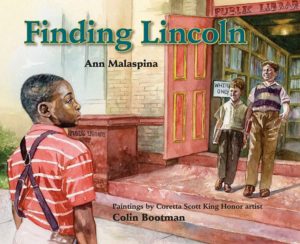 |
In Ann Malaspina’s Finding Lincoln (Albert Whitman, 2009), set in 1951 in Alabama, young Louis has a school assignment to write an essay about Abraham Lincoln – but he’s forbidden to use the “whites only” library. When he bravely visits the library anyway, he receives unexpected help from a sympathetic librarian. For ages 5-8. |
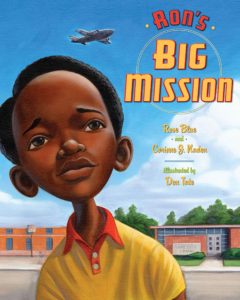 |
In Rose Blue’s Ron’s Big Mission (Dutton, 2009), young Ron McNair, growing up in the 1950s in South Carolina, is forbidden to check out books from the town library – though eventually he manages to prevail over injustice. Based on a true story. McNair went on to become an astronaut. For ages 5-8.
|
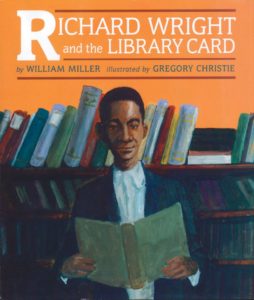 |
William Miller’s Richard Wright and the Library Card (Lee & Low, 1997) is the picture-book story of Wright, author of Native Son and Black Boy, who as a young man in the South in the 1920s was forbidden to borrow books from the public library. For ages 6-9. Also by Miller for the same age group, see Zora Hurston and the Chinaberry Tree (Lee & Low, 1994) and Frederick Douglass: The Last Day of Slavery (Lee & Low, 2005). |
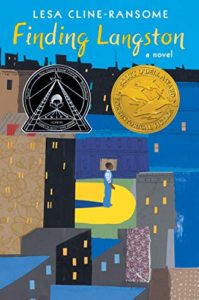 |
In Lesa Cline-Ransome’s Finding Langston (Holiday House, 2020), set in 1946, 11-year-old Langston and his father, after Langston’s mother died, moved from Alabama to Chicago. Langston is having a hard time adjusting to his new town – until he discovers the library which, unlike the whites-only library back home, is open to all. There he discovers Langston Hughes, the poet after whom he is named. For ages 8-12. |
